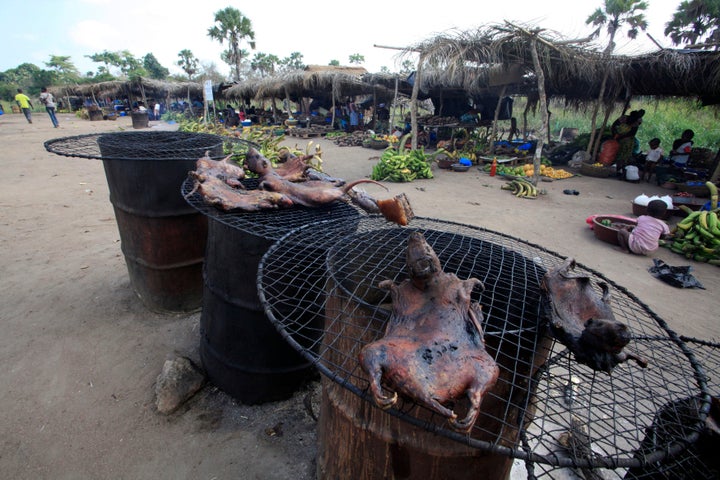LONDON (Reuters) - Sub-Saharan Africa and South East Asia are most at risk from bat viruses jumping to humans and causing new diseases that could lead to deadly outbreaks, scientists warned on Tuesday.
Approximately 60 to 75 percent of emerging infectious diseases are so-called “zoonotic events” ― where animal diseases jump into people ― and bats in particular are known to carry many zoonotic viruses.
The tiny animals are the suspected origin of rabies, Ebola, SARS (Severe Acute Respiratory Syndrome) and possibly Middle East Respiratory Syndrome (MERS), and could cause other as yet unknown epidemics in future.
Scientists at University College London (UCL), the Zoological Society of London and Edinburgh University aimed to map out the highest-risk areas, using a variety of factors including large numbers of bat viruses found locally, increasing population pressure, and hunting bats for bushmeat.
Kate Jones, UCL’s chair of ecology and biodiversity, said her team first created risk maps for each variable and found, for example, that in mapping for potential human-bat contact, sub-Saharan Africa was a hotspot, while for diversity of bat viruses, South America was at most risk.
“By combining the separate maps, we’ve created the first global picture of the overall risks of bat viruses infecting humans in different regions,” she said.
The work was published in journal The American Naturalist.
The research, using data published between 1900 and 2013, found that overall West Africa ― the epicenter of the recent Ebola outbreak ― is at highest risk for zoonotic bat viruses. The wider sub-Saharan Africa region, as well as South East Asia, were also found to be hotspots.
Liam Brierley, a PhD student at Edinburgh University who worked with Jones, said the risk of batto human virus transmission is being driven higher by large and increasing populations of people and livestock expanding into wild areas such as forests.
“People in these areas may also hunt bats for bushmeat, unaware of the risks of transmissible diseases which can occur through touching body fluids and raw meat of bats,” he said.
(Reporting by Kate Kelland; Editing by Catherine Evans)
Support HuffPost
Our 2024 Coverage Needs You
Your Loyalty Means The World To Us
At HuffPost, we believe that everyone needs high-quality journalism, but we understand that not everyone can afford to pay for expensive news subscriptions. That is why we are committed to providing deeply reported, carefully fact-checked news that is freely accessible to everyone.
Whether you come to HuffPost for updates on the 2024 presidential race, hard-hitting investigations into critical issues facing our country today, or trending stories that make you laugh, we appreciate you. The truth is, news costs money to produce, and we are proud that we have never put our stories behind an expensive paywall.
Would you join us to help keep our stories free for all? Your contribution of as little as $2 will go a long way.
Can't afford to donate? Support HuffPost by creating a free account and log in while you read.
As Americans head to the polls in 2024, the very future of our country is at stake. At HuffPost, we believe that a free press is critical to creating well-informed voters. That's why our journalism is free for everyone, even though other newsrooms retreat behind expensive paywalls.
Our journalists will continue to cover the twists and turns during this historic presidential election. With your help, we'll bring you hard-hitting investigations, well-researched analysis and timely takes you can't find elsewhere. Reporting in this current political climate is a responsibility we do not take lightly, and we thank you for your support.
Contribute as little as $2 to keep our news free for all.
Can't afford to donate? Support HuffPost by creating a free account and log in while you read.
Dear HuffPost Reader
Thank you for your past contribution to HuffPost. We are sincerely grateful for readers like you who help us ensure that we can keep our journalism free for everyone.
The stakes are high this year, and our 2024 coverage could use continued support. Would you consider becoming a regular HuffPost contributor?
Dear HuffPost Reader
Thank you for your past contribution to HuffPost. We are sincerely grateful for readers like you who help us ensure that we can keep our journalism free for everyone.
The stakes are high this year, and our 2024 coverage could use continued support. If circumstances have changed since you last contributed, we hope you’ll consider contributing to HuffPost once more.
Already contributed? Log in to hide these messages.


